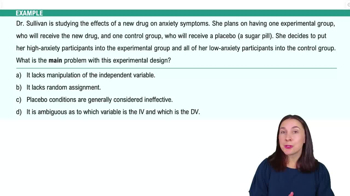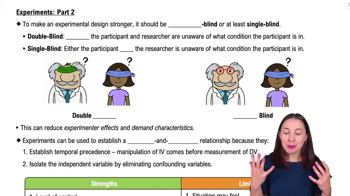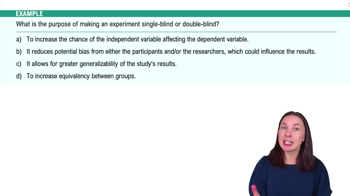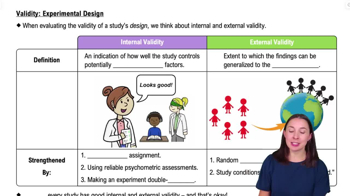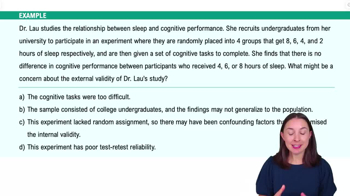Table of contents
- 1. Introduction to Psychology1h 43m
- 2. Psychology Research2h 20m
- 3. Biological Psychology2h 41m
- 4. Sensation and Perception28m
- 5. Consciousness and Sleep32m
- 6. Learning41m
- 7. Memory34m
- 8. Cognition37m
- 9. Emotion and Motivation35m
- 10. Developmental Psychology33m
- 11. Personality48m
- 12. Social Psychology41m
- 13. Stress and Health41m
- 14. Psychological Disorders44m
- 15. Treatment47m
2. Psychology Research
Intro to Research Methods
Struggling with Psychology?
Join thousands of students who trust us to help them ace their exams!Watch the first videoMultiple Choice
The case of Phineas Gage is an often-cited example of a(n)
A
double-blind study.
B
experiment.
C
laboratory observation.
D
case study.
 Verified step by step guidance
Verified step by step guidance1
Understand the context of Phineas Gage: He was a railroad construction foreman who survived a severe brain injury that dramatically changed his personality and behavior.
Recognize that a case study is an in-depth analysis of an individual, group, or event to explore causation and find underlying principles.
Identify that the Phineas Gage incident is a classic example of a case study because it provides detailed information about the effects of brain injury on personality and behavior.
Differentiate between a case study and other research methods: A double-blind study involves neither the participants nor the experimenters knowing who is receiving a particular treatment, an experiment involves manipulating variables to determine cause and effect, and laboratory observation involves observing subjects in a controlled environment.
Conclude that the Phineas Gage incident is best categorized as a case study due to its focus on a single individual's experience and its contribution to understanding the relationship between brain function and behavior.

 1:46m
1:46mWatch next
Master Roadmap of the Lesson with a bite sized video explanation from Hannah Gordils
Start learningRelated Videos
Related Practice










